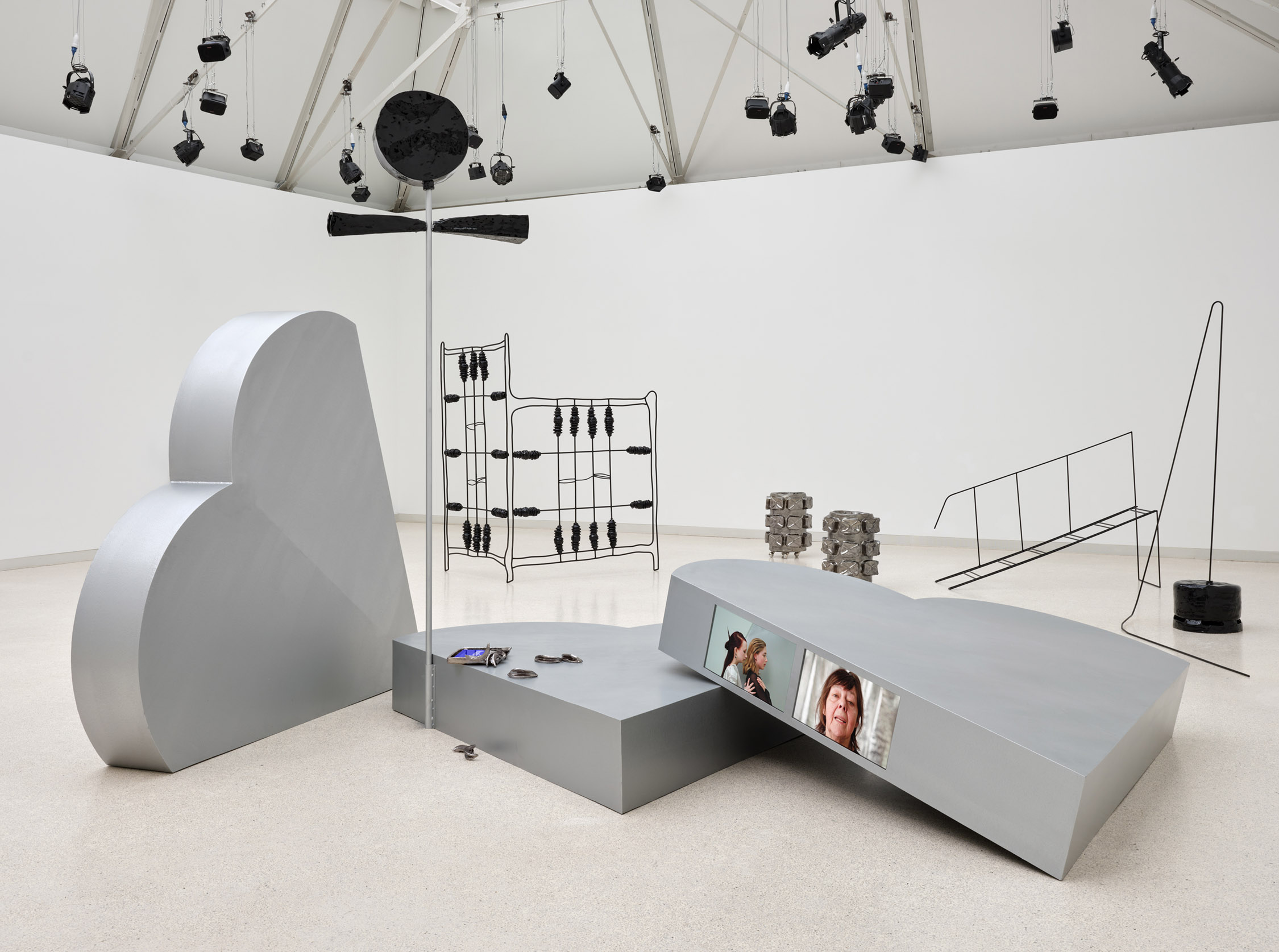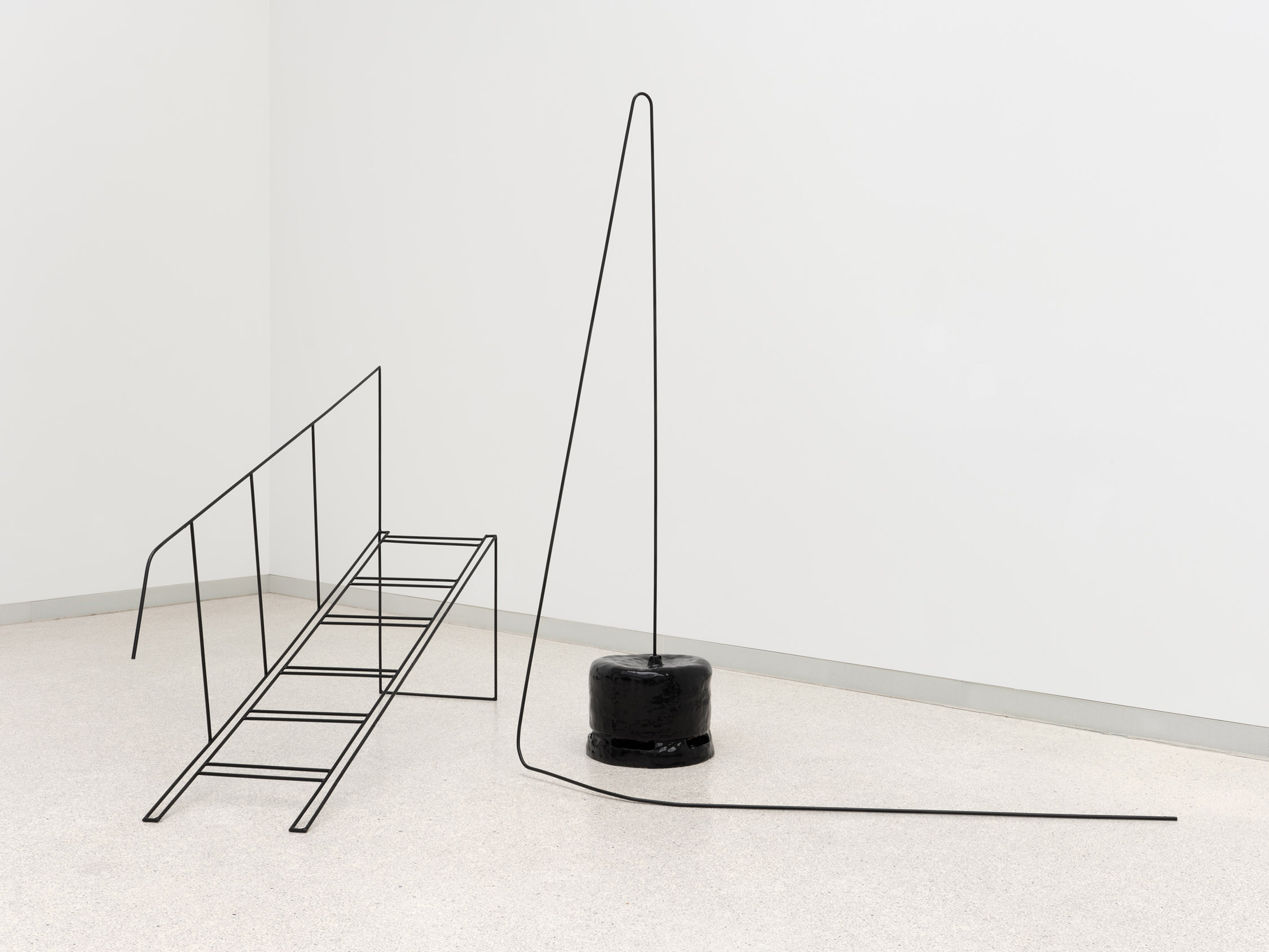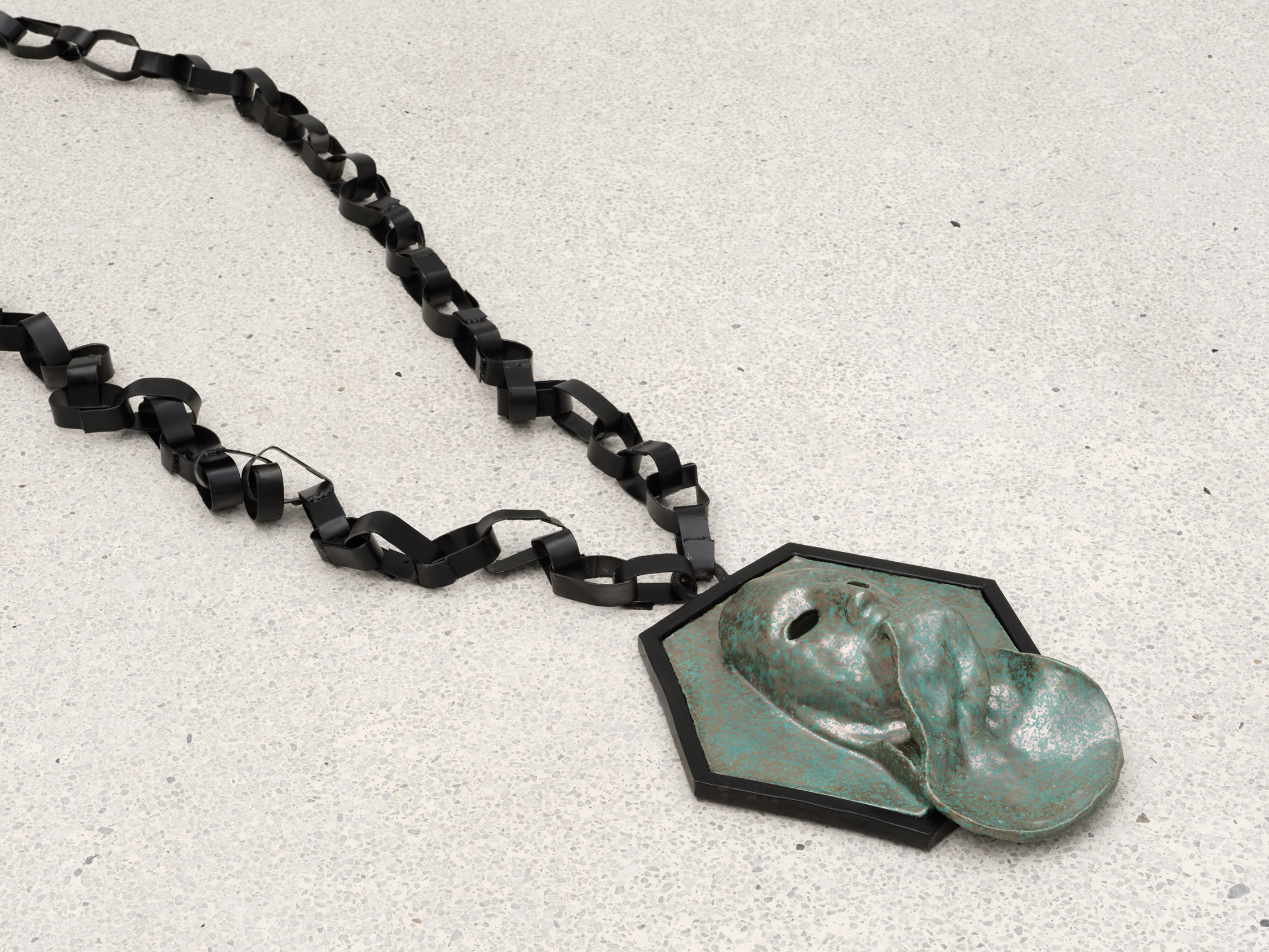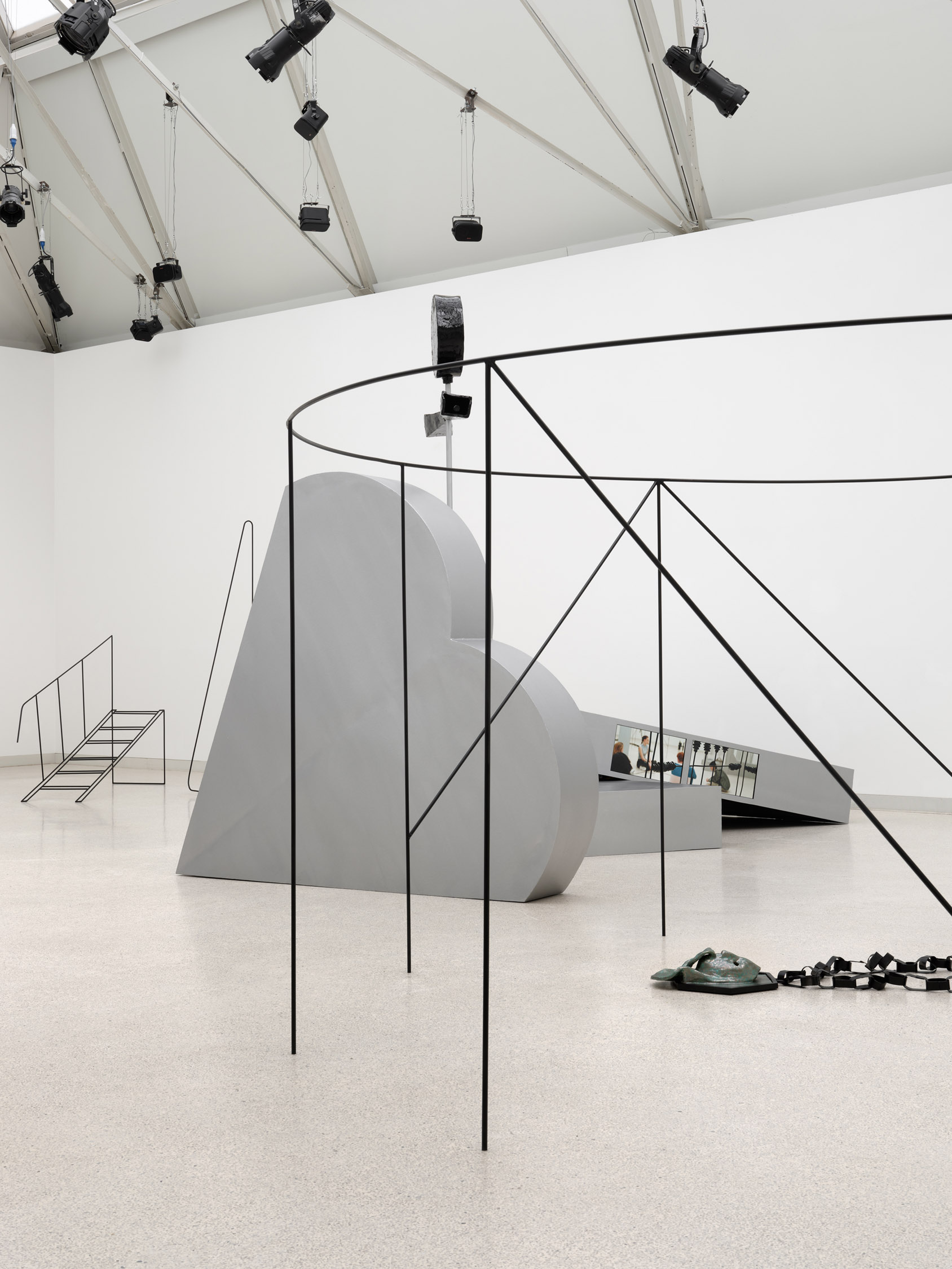Artists: Lisa Seebach & Julia Charlotte Richter
Exhibition title: Aren’t you the one who can remember the future?
Venue: Kunsthalle Bremen, Bremen, Germany
Date: May 4 – August 4, 2024
Photography: all images copyright and courtesy of the artist and ©Kunsthalle Bremen
The expansive, multimedia installation Aren’t you the one who can remember the future? by Lisa Seebach and Julia Charlotte Richter at the Kunsthalle Bremen opens up an enigmatic world. Seebach’s objects, which are reminiscent of architectural and playground elements, plateau-like floor elements and fragile scaffolding constructions block passages and open up new ways of experiencing the space. Several monitors are integrated into this sculptural landscape. They show video loops of different durations, each choreographed and filmed by Richter in the same installation. Young people move through the sculptural landscape in various video sequences. As they do so, they handle the objects present here as if they were entrusted with an unknown task. They remain silent – only the repetitive singing of one of the protagonists can be heard. The scene is accompanied by the swelling and subsiding sound of a choir; subtle at first and more intense as the dramaturgy progresses. Close-ups of choir singers are occasionally shown, commenting on the action with short song lines. The protagonists continually repeat their actions without being able to break out of their seemingly well-rehearsed rituals. In doing so, they seem like forgotten people from another – past or future – world.
In their first collaborative artistic work, Seebach and Richter explore the idea of transformation. They thematise the transitions between phases of life, realities or levels of consciousness, border areas in which changes take place and new experiences await, worlds in which the known mixes with the unknown and passages open up between past, present and future. In particular, the artists pose the question of what kind of world young people are growing into and how previous generations have constructed and left it behind. How can one utilise existing systems, knowledge and structures and make them one’s own?
Lisa Seebach’s objects are based on everyday perceptions, which the artist initially documents in small drawings. These form set pieces that she transfers into steel and ceramics. Architectural elements such as a geodesic dome by Buckminster Fuller, which is modified in the exhibition and appears in a model-like small format and as if placed on a tray, are recurring motifs in her artistic work. A staircase-like structure is reminiscent of playground equipment, but fulfils no function and appears merely as the idea of a staircase in space. Similarly, the expansive, round frame remains just a hint of a climbing frame. Her objects, which are located somewhere between materiality and dematerialisation – some seemingly delicate steel structures, others compact ceramic sculptures – contain associative references to a figurative world, yet at the same time elude clear classification. Seebach thus creates spaces full of subjective echoes. Her sculptural landscape appears as an abandoned place. The objects appear to be trapped in a silent, timeless scenery and at the same time form it themselves.
In her video works, Julia Charlotte Richter deals with subtle moods, desires, longings, fears and processes of realisation of people in different phases of life. To this end, she often works with children, teenagers and young adults. She confronts her performers with a predetermined
setting and gives them instructions on how to act, but there is always room for them to be themselves and deal with the guidelines individually. Richter draws on an archive of the most diverse fragments and found objects for her work, which are transferred into the moving images and re-contextualised: Song lines, phrases from literature, her own observations are the stimulus for developing a performative scene. Individual lines from songs that mean something to the young protagonists portrayed in the videos have been incorporated into the current installation. The title Aren’t you the one who can remember the future? comes from the novel Die Schwerelosen by Valeria Luiselli from 2013 and connects the different levels of time – present, past and future – that the two artists deal with in this work.
Lisa Seebach’s sculptural landscape full of allusions creates an enigmatic visual language. Richter pulls her protagonists out of their everyday context and isolates them within the sculptural landscape, whereby the viewer is drawn into the action without distance, as they also find themselves in this landscape: Simply by entering the space, you become part of the staging. Aren’t you the one who can remember the future? provides the viewer with an insight into fragmentary transitions and fractures that characterise life in different phases of life through the interweaving of videos and sculptures. Seebach’s landscapes invite associative comparisons and challenge the viewer, as they reject any attempt at clear attribution, while Richter’s videos offer an additional level of narrative and allow the viewer to immerse themselves in different levels of time. Her works create an atmosphere full of leaps in time, which is particularly effective on the level of evoked subjective memories.

















